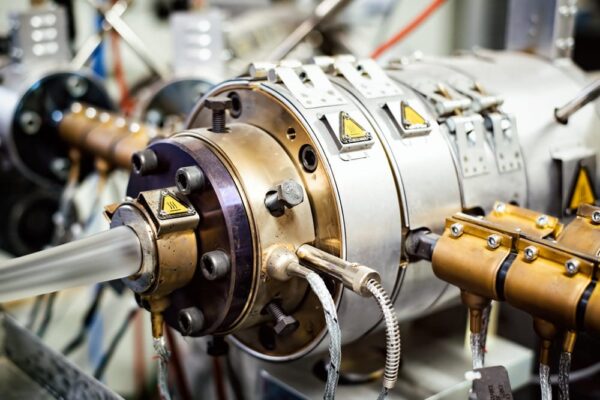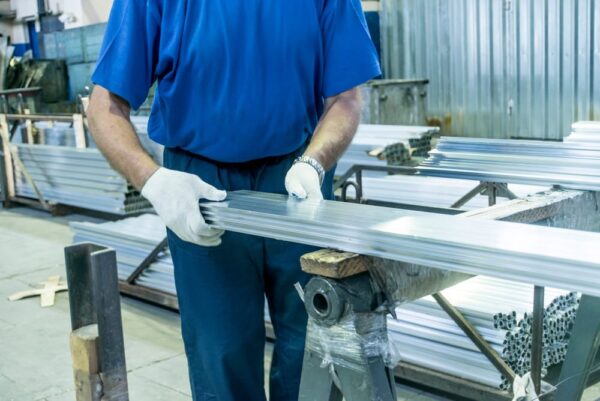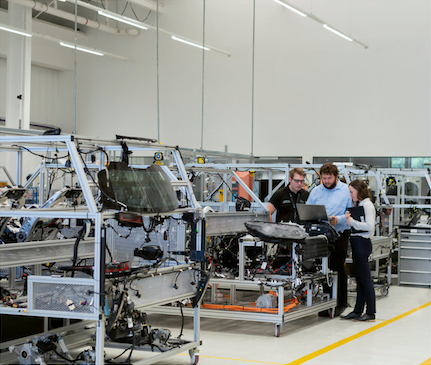Extrusions play an integral role in shaping the industrial world. From automobile components and plastic tubes to food packaging and aluminium window frames, silicone extrusions are virtually indispensable. But what exactly is an extrusion?
What Are Extrusions?
Simply put, extruding is a process that pushes material through a die of a desired shape to create objects of a fixed, cross-sectional profile. Although various industries use them, silicone extrusion types and their uses often remain under the radar. At Viking Extrusions, we aim to shed light on the diversity and versatility of silicone extrusions.
Let’s explore the methods for extrusion and the materials that they use, along with the pros and cons of each method. That way, you can determine the right extrusion for your business.
Whether you’re a seasoned player in the industry or a newcomer seeking to understand the mechanics of extrusion, this comprehensive guide will equip you with the knowledge you need to make an informed decision.
Different Methods of Extruding Materials
Let’s look at what the extrusion process entails, the various methods of extruding materials, and how the different methods compare to one another.
An Explanation of the Extrusion Process
The extrusion process involves forcing a material through a die (an opening set to produce a specific cross-sectional profile). This process uses high pressure and temperature to accomplish it.
As the material emerges on the other side of the die, it takes on a new form, reflecting the shape of the die. Depending on the method and the material, the extruded product can have unique characteristics that are suitable for various applications.
Different Methods Explained
Several methods can extrude materials. The most common methods are hot extrusion, cold extrusion, warm extrusion, and dual extrusion.
- Hot extrusion involves heating the material above its recrystallisation temperature, making it easier to push through the die.
- Cold extrusion occurs at room temperature or slightly warmer than room temperature.
- Warm extrusion combines elements of both, occurring at temperatures between room temperature and the material’s recrystallisation point.
- Dual extrusion merges two different materials in one process, which is ideal for creating composite profiles.
The Pros and Cons of Each Extrusion Method
Each extrusion method has its advantages and drawbacks. For example, hot extrusion allows for a higher rate of production and reduces the need for finishing processes. However, it can be more energy-consuming.
Cold extrusion, on the other hand, enhances the strength and hardness of the material, but it may be unsuitable for materials with low pliability. Weighing these factors will help guide your selection of the right extrusion method for your desired outcome.

Different Types of Extrusions
There are many different types of extrusion, and each has unique qualities and applications. Two of the most common types of extrusion are silicone and aluminium.
Silicone Extrusions
At Viking Extrusions, we specialise in silicone extrusions that cater to a broad range of sectors, from automotive to food and drink. Silicone, as a material, is highly versatile, capable of withstanding varying temperatures, and resistant to ultraviolet light and ozone degradation. You can visit our silicone rubber profiles product page to learn more.
Aluminium Extrusions
Among the common types of extrusion, aluminium stands out due to its lightweight nature, corrosion resistance, and thermal conductivity. Structural applications often use it in the automotive, construction, and electronics industries.
Alternative Extrusion Materials
Aside from silicone and aluminium, you can also extrude other materials, such as steel, copper, and plastic. Each material has unique applications and advantages.
Selecting the right material for extrusion plays a significant role in the outcome of the process. The nature of the material can influence the method of extrusion, the temperature required, as well as the complexity of the final product’s shape.
Materials suitable for extrusion usually possess properties, such as high ductility and low melting points. Metals such as aluminium and copper, plastics such as high-density polyethylene and polyvinyl chloride and rubbers such as silicone meet these criteria.
Some materials may even require specific extrusion methods, such as brittle materials or those with low heat resistance. Cold extrusion will better suit these material types.
Understanding the properties of each material and how it interacts with the extrusion process can help you optimise your production processes and create high-quality extruded products.
If you’re unsure about what material is best for your specific application, that’s fine. Our experts at Viking Extrusions have extensive knowledge of the extrusion process, and we’ll help you pick the right material to reach your desired outcome.

The Advantages and Disadvantages of Different Types of Extrusions
Realising the full potential of extrusions requires a full understanding of silicone rubber and the pros and cons of each method of extrusion. In a nutshell, silicone extrusions are highly flexible, resistant to extreme temperatures, and excellent at providing electrical insulation. However, they might not be the top option for applications that require lots of strength.
In these cases, it is better to use aluminium extrusions. Many businesses prefer aluminium for its strength-to-weight ratio, corrosion resistance, and thermal efficiency.
Aluminium may not work effectively, however, in conditions that require high electrical conductivity. Similarly, other extrusion types have their own unique sets of advantages and disadvantages.
Silicone Extrusions Might Be the Best Material for Most Applications
Silicone extrusions can serve as the top option for a variety of businesses, particularly in the healthcare, automotive, and food and drink industries. That’s because silicone extrusions are incredibly flexible, durable, and resistant to varying temperatures. Whether your business needs seals, gaskets, or tubing, silicone extrusions might be the ideal option for you.
Choosing the Right Extrusion for Your Business
Selecting the right extrusion boils down to understanding your business needs, the specific application, and the characteristics of different extrusion materials. It’s crucial to consider which factors, such as durability, flexibility, and resistance to temperatures and chemicals, are most important for your application to work properly.
Contact Viking Extrusions for Your Silicone Extrusion Needs
Knowing the different types and methods of extrusions, their advantages and disadvantages and the benefits of silicone extrusions are fundamental to making an informed decision for your business needs. Our experts at Viking Extrusions are here to help you determine which silicone extrusion is right for your unique business.

